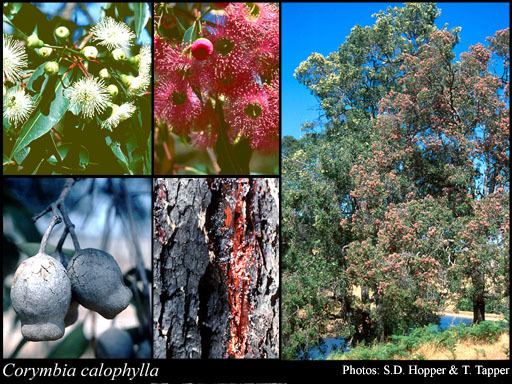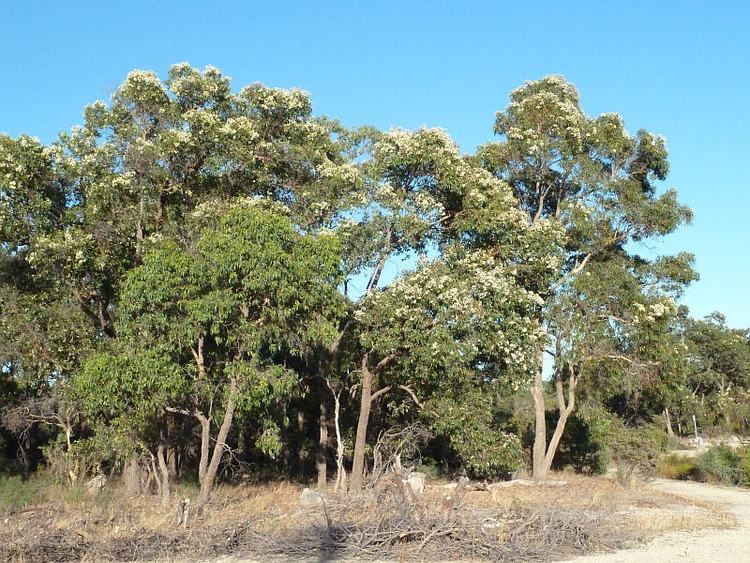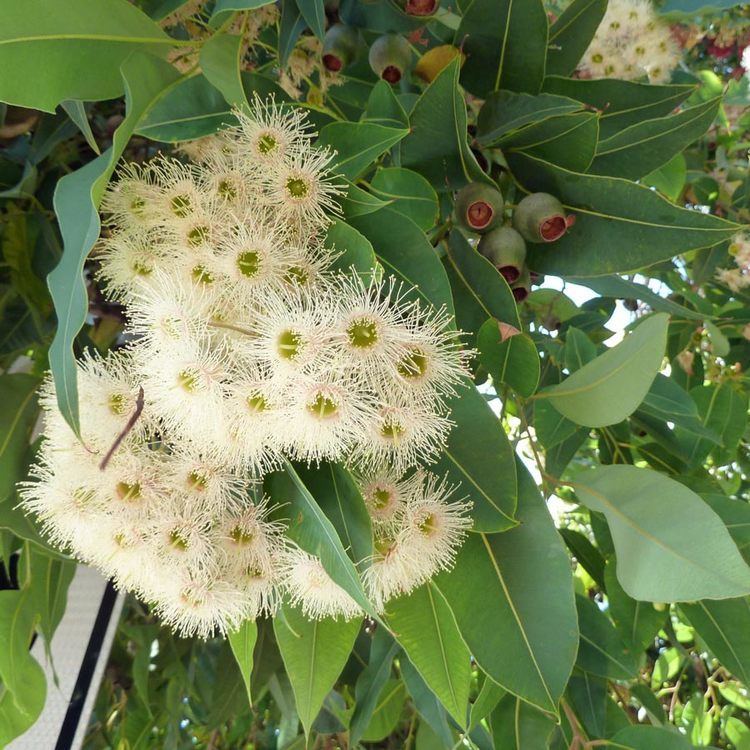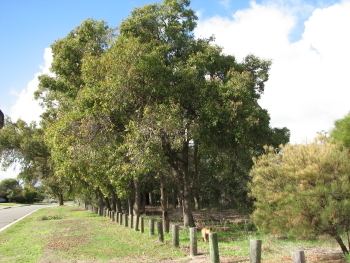Scientific name Corymbia calophylla Rank Species | Genus Corymbia Higher classification Corymbia | |
 | ||
Similar Corymbia, Jarrah, Eucalyptus wandoo, Eucalyptus diversicolor, Banksia grandis | ||
Corymbia calophylla, also known as Eucalyptus calophylla, is a bloodwood native to Western Australia. Common names include marri and Port Gregory gum, and a long-standing usage has been red gum due to the red gum effusions often found on trunks.
Contents

It is distinctive among bloodwoods for its very large buds and fruit, colloquially honky nuts, in Western Australia.
The Noongar peoples know the tree as gardan, kurrden, mahree, marri, nandap or ngora.
Description

The tree, or rarely mallee, typically grows to a height of 40 metres (131 ft) but can reach as a high as 60 metres (197 ft). It has rough tessellated grey-brown to red-brown bark that extends over the length of the trunk and branches. Adult leaves are disjunct, glossy, green, thick and concolorous with a broad lanceolate to ovate shape that is basally tapered or basally rounded. The leaf blade is 9 to 14 centimetres (4 to 6 in) long and 25 to 40 millimetres (0.98 to 1.57 in) wide. The leaf petioles are narrowly flattened or channelled and 15 to 20 mm (0.59 to 0.79 in) long. It blooms between December and May producing white to pink flowers. The terminal compound conflorescence composed of three to seven flowered regular umbellasters on terete or angular peduncles. Buds form that are clavate and 7 to 14 mm (0.28 to 0.55 in) in length and with a diameter of 7 to 10 mm (0.28 to 0.39 in) with a calyptrate calyx. The fruits or gumnuts form later and can remain on the tree for a year or more. They are ovoid to urceolate in shape, pedicellate, and 30 to 50 mm (1.2 to 2.0 in) long with a 25 to 40 mm (1.0 to 1.6 in) diameter.

The large nuts produced carry large seeds which are an important food source for native bird species such as cockatoos. The tree propagates readily from seeds.
Classification

The species originally was first described as Eucalyptus calophylla by the botanist John Lindley in 1841 in the journal Edwards Botanical Register from samples collected by Robert Brown near King George Sound in 1801.

In 2009, Parra-O and colleagues published a combined analysis of nuclear rDNA (ETS + ITS) and morphological characters published to clarify relationships within the genus Corymbia. C. calophylla was found to form a natural group with two other Western Australian species C. ficifolia and C. haematoxylon. They classified the group as section Calophyllae within the subgenus Corymbia.
It is related and somewhat similar to the red-flowering gum (Corymbia ficifolia). C. calophylla differs in being much larger (to about 50 metres (160 ft) high in the wild), having very much larger buds and fruit, and having flowers that are usually white to pink instead of red. However, in some areas hybridisation makes identification difficult.
Range
Marri is widely distributed in the South West region of Western Australia, from north of Geraldton (28° S) to Cape Riche (34° S), and inland beyond Narrogin (32°56′S 117° E).
It is found on the Swan Coastal Plain and on the Darling Scarp showing its adaptability to the different environments.
It will grow on comparatively poor soil, but good specimens are considered an indicator of the better agricultural soils.
Found in a variety of terrains including Flats, hills, breakaways, wetlands, fringing salt marches and beside drainage lines it is able to grow in red-brown clay loams, orange-brown sandy clays, gravel and grey sandy soils over limestone, granite or laterite.
Uses
Marri timber is increasingly featured in modern household furniture. The timber is honey coloured and has a unique vein structure. However, it is not used in construction as the wood structure exhibits complex faults.
Marri trees played a significant role in Nyoongar culture. The red gum, mayat, which oozes from the tree, contains tannin, which has antiseptic qualities. Mayat was powdered and sprinkled onto open wounds to prevent bleeding, added to water for a mouthwash or disinfectant, mixed with clay and water and used as a medicinal drink for dysentery or used to tan kangaroo skins for cloaks or bags.
The marri is used to make a variety of objects like doarks (sticks for knocking the tops off grass trees), kitjs (spears) and wannas (digging sticks).
Additionally, the blossoms from the marri can be used as a source of honey, which can be sucked directly from the flower or can be dipped into water to make a sweet drink. These blossoms also attract ngoowak (bees) and honey can be found in the hollows of eucalyptus branches. These trees also attract birds which nest in the branch hollows, in which eggs can be found to eat.
